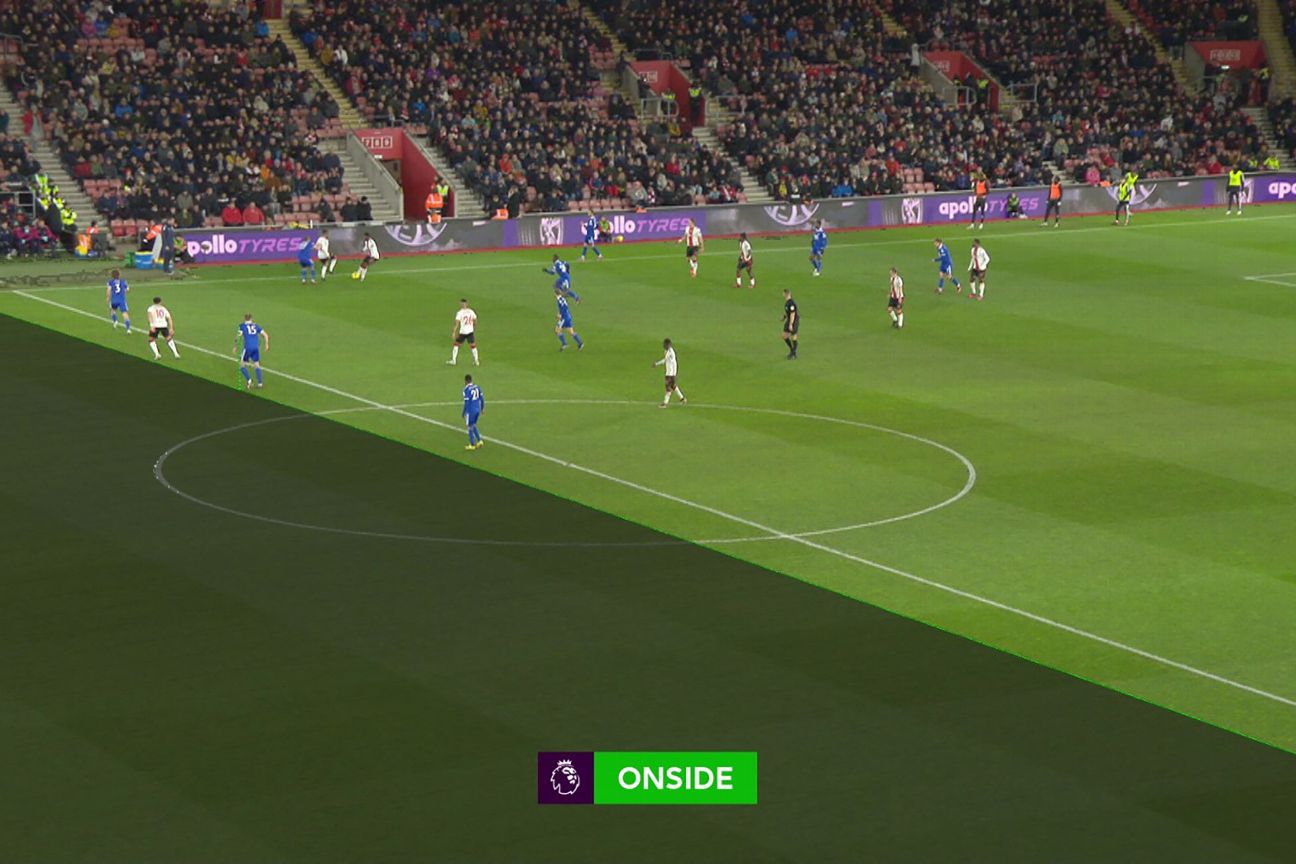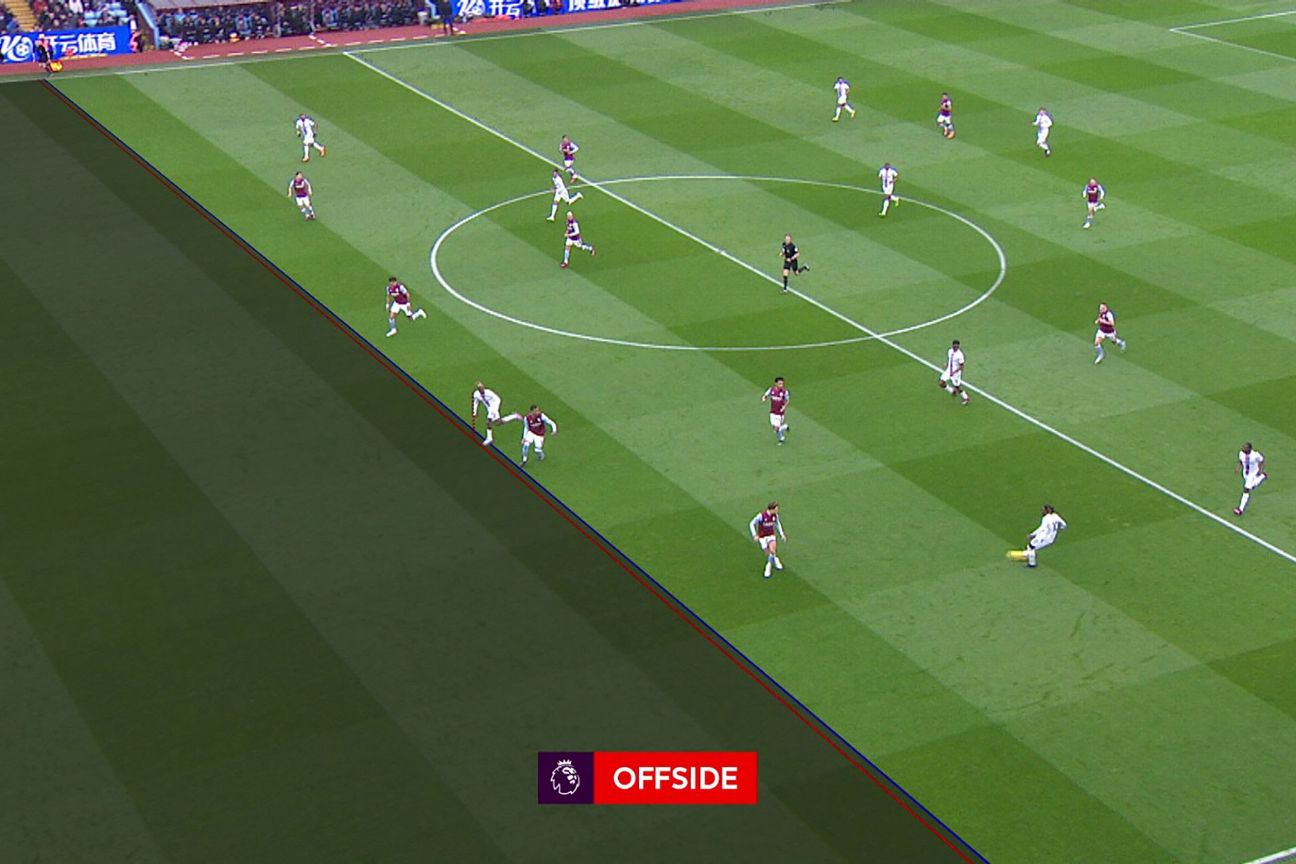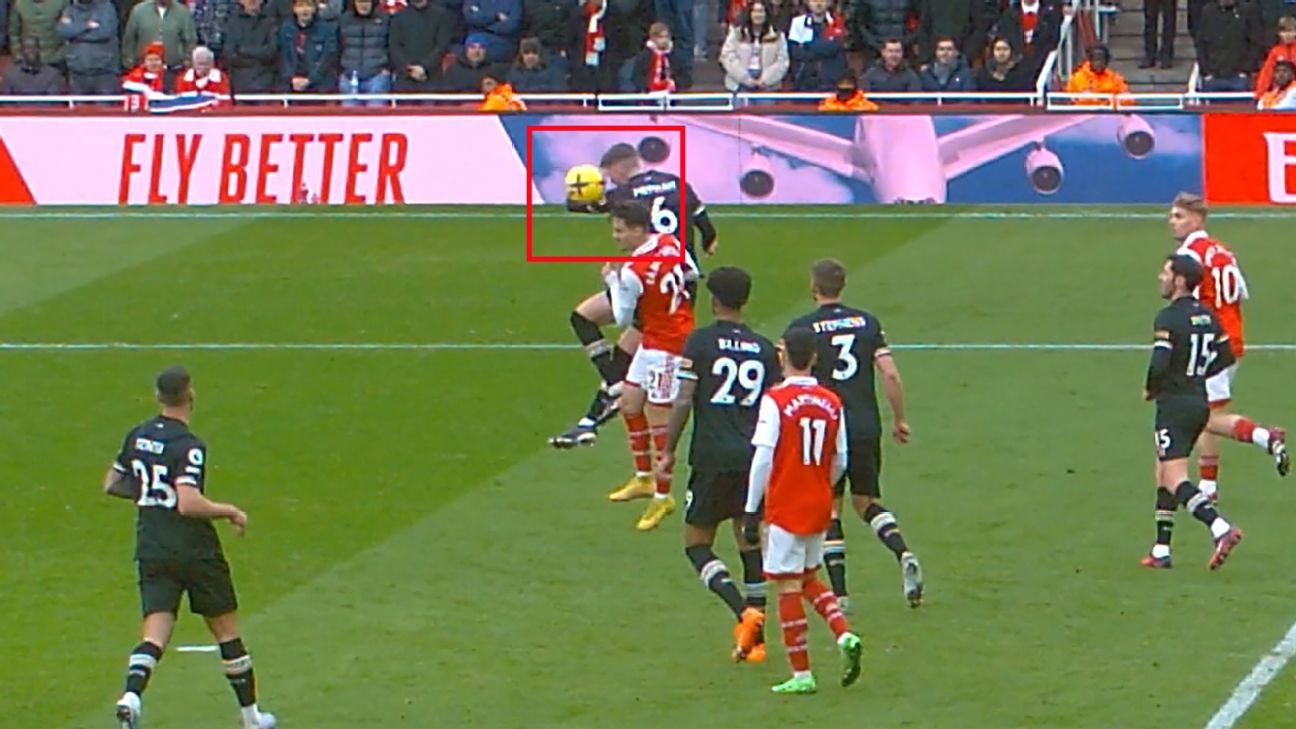Video Assistant Referee causes controversy every week in the Premier League, but how are decisions made, and are they correct?
After each weekend we take a look at the major incidents, to examine and explain the process both in terms of VAR protocol and the Laws of the Game.
– How VAR decisions affected every Prem club in 2022-23
– VAR in the Premier League: Ultimate guide
In this week’s VAR Review: A whole host of handball penalty claims for Arsenal in their comeback win against AFC Bournemouth, as well as one penalty for Manchester United at Liverpool and a red card for Scott McTominay. Plus all the big decisions around the Premier League over the weekend.
Possible penalty: Handball by Mepham
What happened: In the 24th minute, Chris Mepham jumped to win a looping ball under pressure from Fabio Vieira. He missed it with his head and the ball struck his arm. Arsenal’s players appealed for a penalty.
VAR decision: No penalty.
VAR review: This was the first of an incredible four handball penalty appeals from Arsenal, and each one is covered by a slightly different area of the law. This one comes down to the top of the arm being considered a legal place for the ball to hit.
The modern interpretation (the whole arm all the way up to the shoulder used to be considered handball) is very difficult to apply consistently. The logic is that the top part of the arm cannot make the silhouette of the body bigger no matter what position it’s in, so shouldn’t be considered handball.
The boundary isn’t the bottom of the sleeve, it’s described as being “in line with the bottom of the armpit.” The IFAB’s diagram shows how this should be judged when a player is jumping, but determining the exact point on the arm that the surface of the ball touches, and where the actual boundary line sits, is a difficult one for any referee or VAR to judge.
Premier League officials have used the badge or sponsor logo on a player’s arm as a reference point, as it’s in the same place on all shirts — whether they are long-sleeved or short-sleeved. If the ball hits around this area, it will be judged as legal. So Mepham is lucky the ball hits high enough up for the VAR not to become involved.
That said, if the ball had hit lower on the arm, there would be an argument that Vieira’s nudge had caused Mepham to miss his header, resulting in the handball.
Possible penalty: Handball by Stephens
What happened: In the 74th minute, Jack Stephens blocked a cross by Bukayo Saka. The ball came off the defender’s arm and crashed back off the post. Referee Chris Kavanagh ignored the requests for a penalty.
VAR decision: No penalty.
VAR review: Stephens was exceptionally lucky. He leans into Saka’s cross and the ball comes off his upper arm. Even though his arm is tucked into his body, he moves his body towards the ball and that would be a handball offence — if low on the arm. Again, the VAR, John Brooks, has decided it was too high on the arm and therefore a legal play of the ball.
In December, Manchester United wanted a penalty against Nottingham Forest in similar circumstances. Remo Freuler leaned into a ball and it hit his arm, but referee and VAR decided against a penalty. The independent assessment panel judged it was a missed intervention and United should have been awarded a spot kick through VAR — but the contact on Freuler was lower than Stephens.
Possible penalty: Handball by Senesi
What happened: In the 79th minute, Martin Odegaard‘s shot was blocked by Marcos Senesi. Yet again there were claims for a penalty for handball.
VAR decision: No penalty.
VAR review: This is the easiest decision of the four for the officials. Senesi has his arm tucked in and it’s not making his body unnaturally bigger, and the shot is from close proximity. A penalty shouldn’t be awarded for this.
Possible penalty: Handball by Billing
What happened: From the resulting corner after the previous handball claim, the ball bounced up and was stopped close to the line by Philip Billing under pressure from Gabriel. For the fourth time, there were appeals for a handball penalty.
VAR decision: No penalty.
VAR review: Perhaps the most controversial of the claims. Billing is just in front of the goal-line when Gabriel heads towards goal and it hits the hand. The header being from point-blank range saves the Bournemouth player, with his arm also being close to his body.
It wouldn’t be considered that Billing had stopped a goal, which would be a red-card offence, as goalkeeper Neto is behind him.
This is probably the one handball which wouldn’t have been changed through VAR if awarded by the referee. Some may feel Billing’s arm is in a position which has stopped Gabriel’s effort on goal, regardless of proximity.
Possible disallowed goal: Encroaching on a kick-off by Semenyo
What happened: Billing scored the second-fastest goal in Premier League history after just 9.11 seconds, but Antoine Semenyo was already in the Arsenal half before Dominic Solanke had taken the kick-off.
VAR decision: No VAR intervention possible.
VAR review: The VAR cannot rule on any starts or restarts — throw-ins, free kicks, etc — so would be unable to intervene on a player being in the opposition’s half at kick-off. This is something the on-field team has to spot and order an immediate retake of the kick-off.
Even if VAR was responsible for such incidents, Semenyo doesn’t get involved in the play at any point so would be considered immaterial to the goal. It would be such a trivial offence to disallow a goal for.
Possible penalty: Alisson challenge on Fernandes
What happened: In the 54th minute, Liverpool were playing the ball around the back, and Alisson let the ball slip under his foot. Bruno Fernandes closed him down and the goalkeeper dived at his feet, but before playing the ball with his legs he appeared to catch the Manchester United player.
VAR decision: No penalty.
VAR review: This could easily have been a penalty, when the score was 3-0, with the goalkeeper making a rash attempt to make up for his own error. While he does get a touch on the ball with his leg, he has already made some contact with Fernandes with his hands.
The only question for the VAR, David Coote, is whether the way Fernandes goes to ground matches the level of contact. Did the Portugal international embellish the way he went to ground to try to win the spot kick? That will be in the mind of Coote when he is assessing the situation, but if referee Madley had pointed to the penalty spot it definitely wouldn’t have been overturned by the VAR.
Possible red card: McTominay on Gakpo
What happened: In the 64th minute, Scott McTominay slid in to tackle Cody Gakpo, won the ball but caught the Liverpool player with his follow through. Referee Madley chose to show McTominay just a yellow card.
VAR decision: No red card.
VAR review: McTominay was fortunate, because this is one of those challenges that will stay with the on-field decision whichever way the referee choses to go. McTominay was in control in the way he went to ground, and while he won the ball he did make contact with his opponent above the ankle with his follow through.
Intent isn’t relevant when it comes to judging endangering the safety of an opponent, so “winning the ball” doesn’t come into the equation.
Could McTominay have got his foot out of the way of Gakpo? Perhaps, but it’s not a clear and obvious error for the referee to choose to show a yellow card.
Possible offside: Jota on Salah goal
What happened: In the 83rd minute, Mohamed Salah scored Liverpool’s sixth goal — but there was a VAR check for offside against Diogo Jota in the buildup.
VAR decision: No offside.
1̷2̷8̷
129Breaking yet another record in Red and becoming our leading @PremierLeague scorer 👑
A special, special footballer. pic.twitter.com/0D4C60l3nh
— Liverpool FC (@LFC) March 5, 2023
VAR review: It would have been one of those offside decisions few fans could’ve noticed at the time, but there was a check against Jota who could have been in front of the last defender when the ball is touched by Roberto Firmino.
Jota then runs across the six-yard area and challenges Luke Shaw for the ball, so the goal would have been disallowed if the Portugal international was in an offside position.
Possible red card: Alcaraz for foul on Castagne
What happened: In the 21st minute, Carlos Alcaraz caught Timothy Castagne with a late challenge, and referee Robert Jones opted to show the forward a yellow card.
VAR decision: No red card.
VAR review: Alcaraz, who would go on to score the only goal of the game, caught Castagne on the top of the foot. If he had made contact any higher, it would surely have been a red card because of the way he brought his foot down onto his opponent.
The tackle is reckless rather than dangerous, so a yellow card is an acceptable disciplinary outcome.
Possible penalty overturn: Handball by Castagne
What happened: Southampton were awarded a penalty kick in the 31st minute when Castagne blocked an attempted cross into the area by Theo Walcott. Referee Jones pointed to the spot.
VAR decision: Penalty stands, James Ward-Prowse‘s spot kick saved by Danny Ward.
VAR review: A textbook handball offence. Castagne goes in to block a cross with his arm way above his head. If the ball hit his arm, there’s only going to be one outcome. Even if the assistant hadn’t raised his flag to alert the referee, this would have been a certain VAR intervention.
Possible offside: Adams in buildup to Alcaraz goal
What happened: Southampton scored the only goal of the game in the 35th minute when Ainsley Maitland-Niles played a ball to Che Adams, who was stood along the defensive line and spun to release a reverse pass through to Alcaraz to score; there was a check for a possible offside in the build up against Adams.
VAR decision: Goal stands.
VAR review: Another goal saved by the tolerance level applied to offside in the Premier League, shown by a single green line drawn to the last defender appearing on the VAR image.
This would probably have been disallowed if semi-automated offside technology was in use.

Possible penalty overturn: Shelvey foul on McNeil
What happened: Everton were awarded a penalty in the ninth minute when Dwight McNeil was tripped by Jonjo Shelvey. There was a double check for the VAR, Paul Tierney — for the foul itself but also a possible handball in the buildup by Abdoulaye Doucoure.
VAR decision: Penalty stands, scored by Demarai Gray.
VAR review: Shelvey tries to make a tackle, doesn’t get the ball and places his leg into the path of McNeil’s turn inside the area.
McNeil did use the challenge from Shelvey, but once referee John Brooks has given the penalty it won’t be overturned. The Everton player didn’t initiate the contact, as he was already in the path of the tackle, but he certainly knew where Shelvey’s leg was.
The ball may have hit the upper part of Doucoure’s arm in the buildup, but it would have to be a deliberate act to cancel the spot kick, and there was no evidence of this.
Possible penalty: Colback challenge on Coleman
What happened: Everton had strong appeals for a spot kick in the 23rd minute when Seamus Coleman tried to break along the goal-line and cut a cross into the area, but went to ground under a challenge from Jack Colback. Brooks wasn’t interested in the claims for a penalty.
VAR decision: No penalty.
VAR review: The kind of challenge which is only going to result in a penalty if given by the referee. It’s Coleman who kicks Colback, but there could still have been a penalty as the Forest player was limiting the space of the attacker in the area.
We regularly see penalties awarded when a defender has clipped an attacker, causing him to trip. This is along the same lines — a penalty if given on the field, but not a situation the VAR will get involved in as a clear and obvious error.
Possible offside: Zaha when scoring
What happened: Wilfried Zaha gave Crystal Palace the lead in the fourth minute, but there was a review for offside.
VAR decision: Goal disallowed.
VAR review: Unfortunate for Zaha, who just went too early. There is a clear gap between the attacking and defensive offside lines.

Possible straight red card: Doucoure for challenge on Chambers
What happened: Cheick Doucoure fouled Calum Chambers in the 62nd minute. Referee Craig Pawson played advantage and when the attack broke down went back and booked Doucoure, which was his second yellow card. But was the challenge worthy of a straight red?
VAR decision: No straight red card.
VAR review: Even though Doucoure was sent off for a second yellow card, it is still possible for the VAR to initiate a review for a straight red. That might seem strange, considering the player had been sent off anyway, but serious foul play would carry a three-match bar rather than the one he will receive for two cautions.
Doucoure does catch Chambers above the ankle, but he doesn’t do so with force. He wouldn’t be considered to be endangering the safety of an opponent, so the second yellow card from Pawson would be considered adequate.
Possible penalty overturn: Bowen foul on Mitoma
What happened: Brighton & Hove Albion were awarded a penalty in the 17th minute when Kaoru Mitoma was bundled to the ground by Jarrod Bowen, and referee Stuart Attwell pointed to the spot.
VAR decision: Penalty stands.
VAR review: Another easy decision for the referee if not a stonewall spot kick. Bowen comes in from the side and knocks Mitoma to the ground. There would be no chance of a VAR intervention from Peter Bankes.
Possible offside: Mitoma when scoring
What happened: Mitoma scored Brighton’s third goal in the 69th minute, tapping home from close range after a cross-shot from Pascal Gross. There was a check for offside.
VAR decision: No offside.
VAR review: An interesting offside decision to highlight. It was obviously a correct call, but Mitoma was only onside because Emerson had stuck out a leg to try to block the cross from Gross. Had Emerson been in a standing position, Mitoma may well have been in front of him and in an offside position.
Information provided by the Premier League and PGMOL was used in this story.
